Lithic Bodies UNSW Galleries UNSW Galleries & Clifton School of the Arts
(2024)
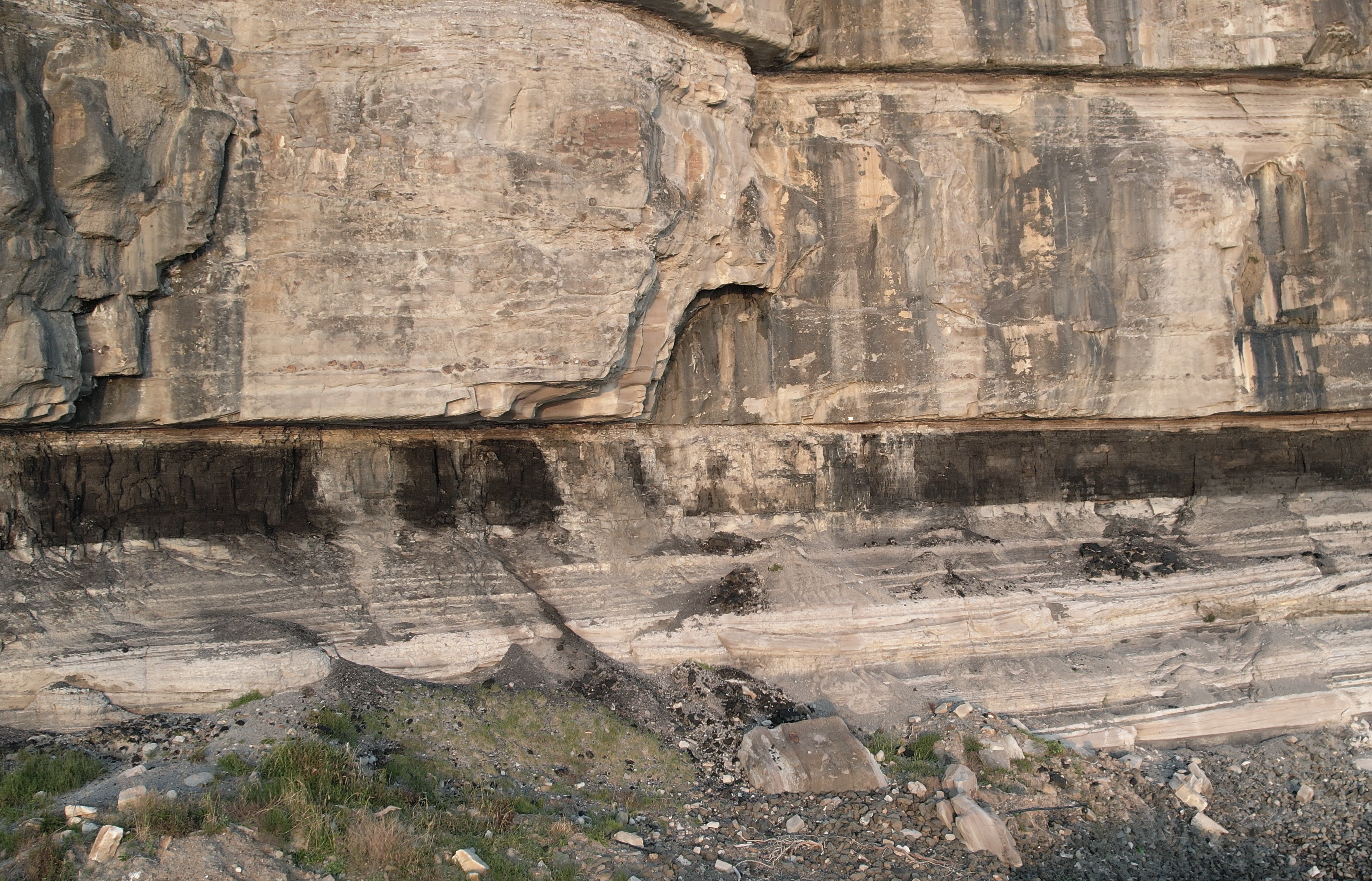
- Exhibition Dates
- 27 September – 24 November, 2024
Venue- UNSW Galleries, Paddington
- Curated By
- Bronwyn Bailey-Charteris
Curatorial assistance by Catherine Woolley - Parallel Exhibition
- Clifton School of the Arts
12 October - 27 October 2024 - Associated Material
- Exhibition Brochure
Room sheet and list of works - Article: Encountering the extinction line: how art can help us re-imagine and bear witness to climate futures
Lithic Bodies presents an expansive new body of work, stemming from long-term research with the Permian-Triassic ‘extinction line’ visible on the Illawarra escarpment on Dharawal Country. This stratigraphic line becomes a material figure for understanding the complex entanglements of its specific location, extending to planetary scales of extraction. With an emphasis on material relations mobilised through an expanded sculptural practice including video, text, walks and talks, Lithic Bodies contends with the ongoing legacies of colonial inheritance and resource extraction while offering ways to attune to the geologic underpinnings of place and recognise our indebtedness to the non-human.
The ‘extinction line’ marks the greatest mass extinction event in Earth’s history, and is the boundary between Permian and Triassic geologic periods around 252 million years ago. The line bears witness to climate change in deep time and resonates with current environmental crises. The extinction line is engaged with as a conceptual and material loop between epochs where our relationships with place and geologic histories are enacted materially.
Lithic Bodies has developed from situated fieldwork ranging from intertidal zones to the palaeobotanical archives of the Australian Museum. The working processes have been informed by several critical companions from the fields of palaeobotany, social geography, geology, horticulture and Indigenous knowledge. The exhibition and public program is held across two locations; UNSW Galleries and the Clifton School of Arts, with each place functioning as a parallel site to the other. At Clifton and Paddington the expanded public programs bring multiple disciplines together through public walks and a discussion panel.
This project’s exploration ranges in scale from intimate, handheld objects to a vast filmic projection of the extinction line. The installation intersperses fragmented impressions of surfaces including fossilised leaves, coalified wood, and anthropogenic pollution present on location, which reappear as bronze cast objects, frottage screenprints, photographic images, and video. By assembling fragments that register both human and non-human material relations, Lithic Bodies aims to illuminate the instability of thought and materiality at the close of the Holocene.
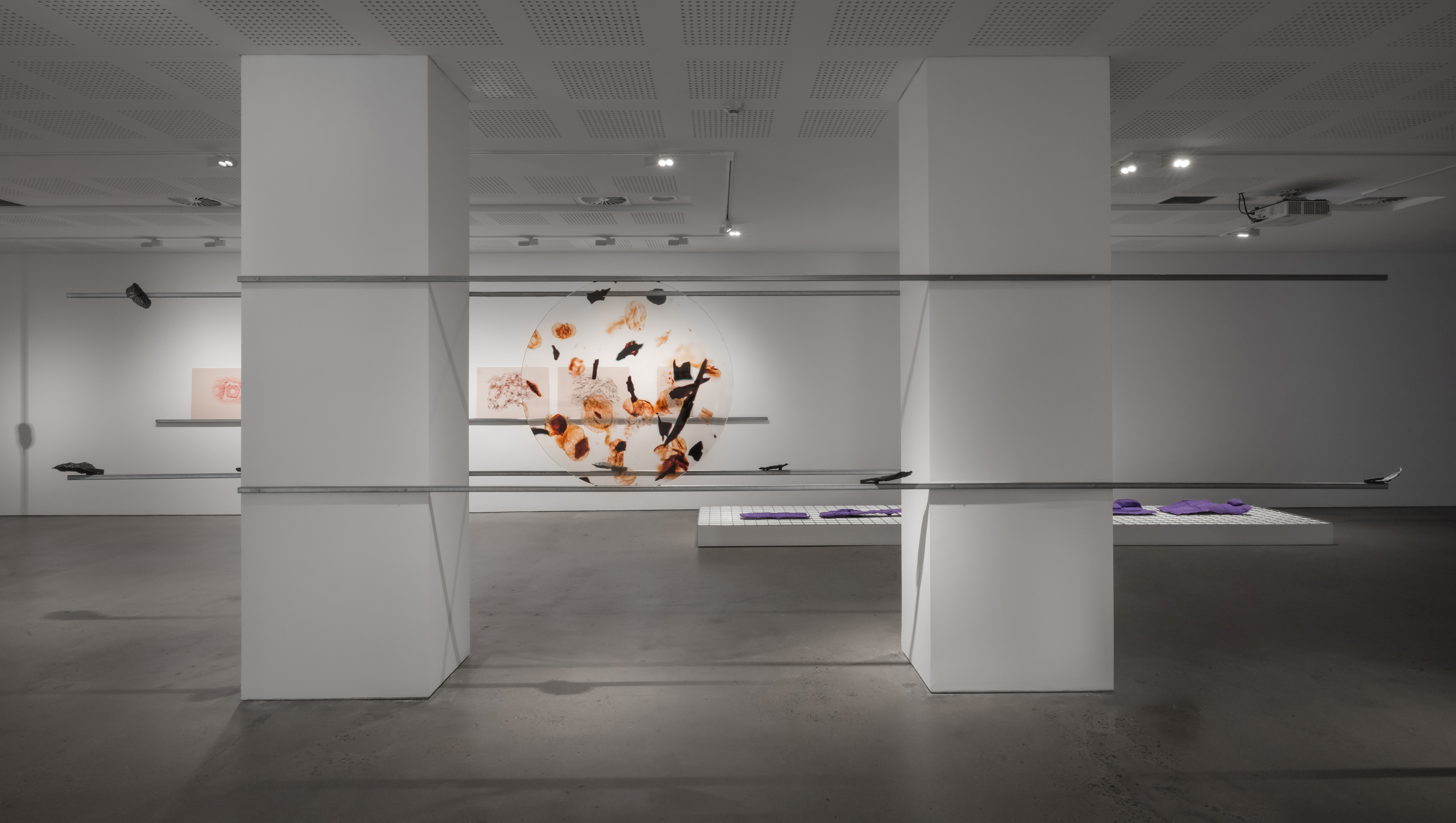
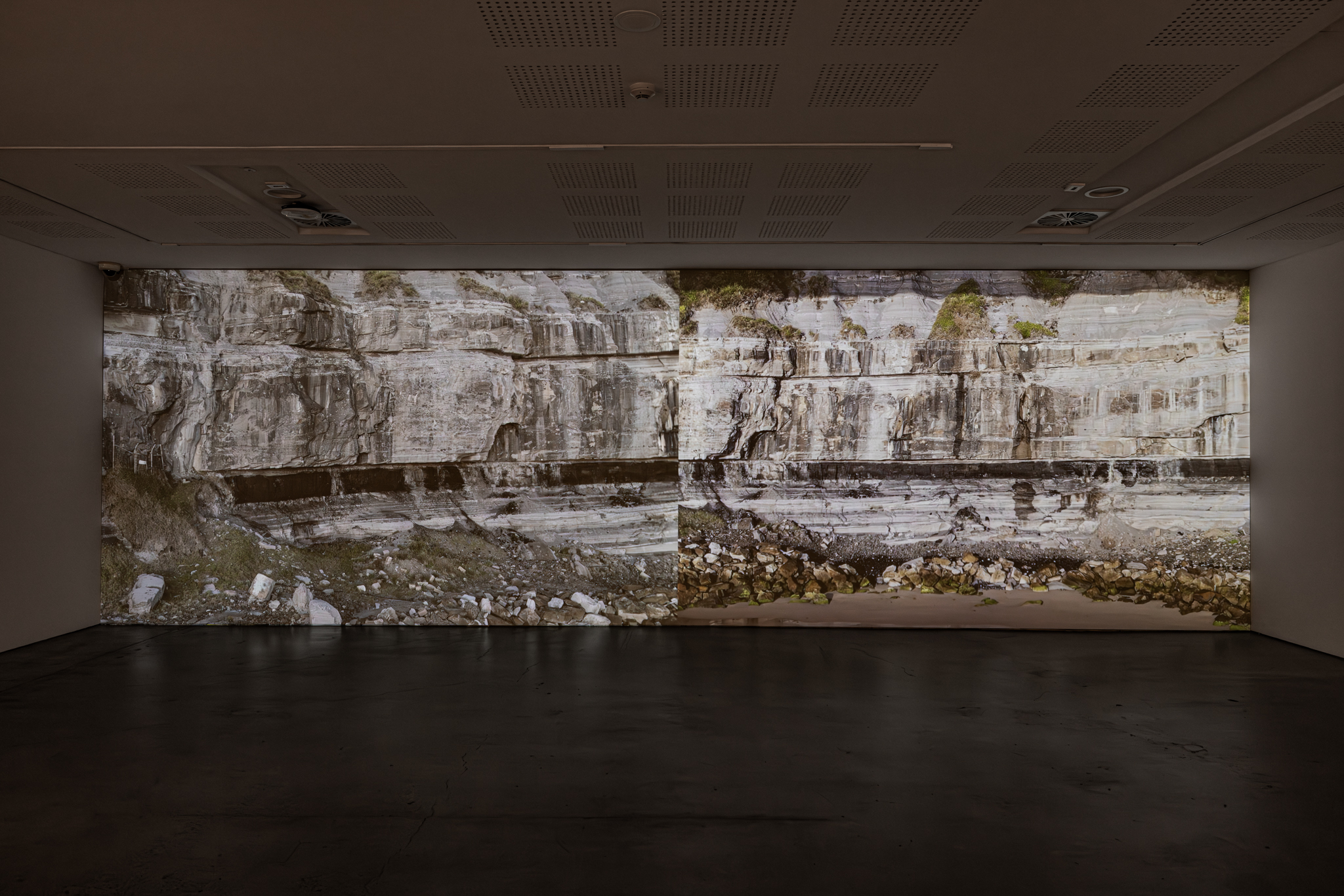
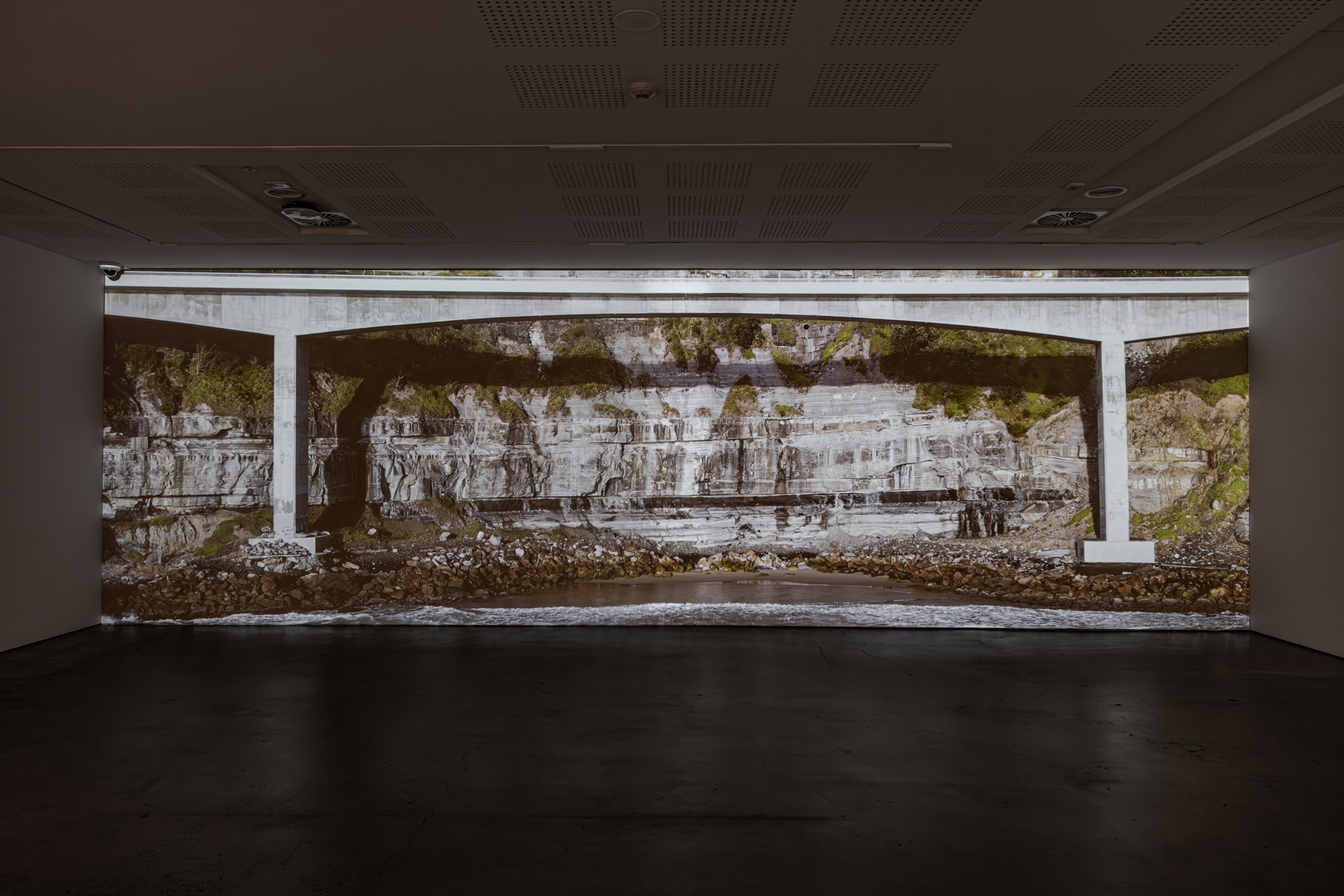

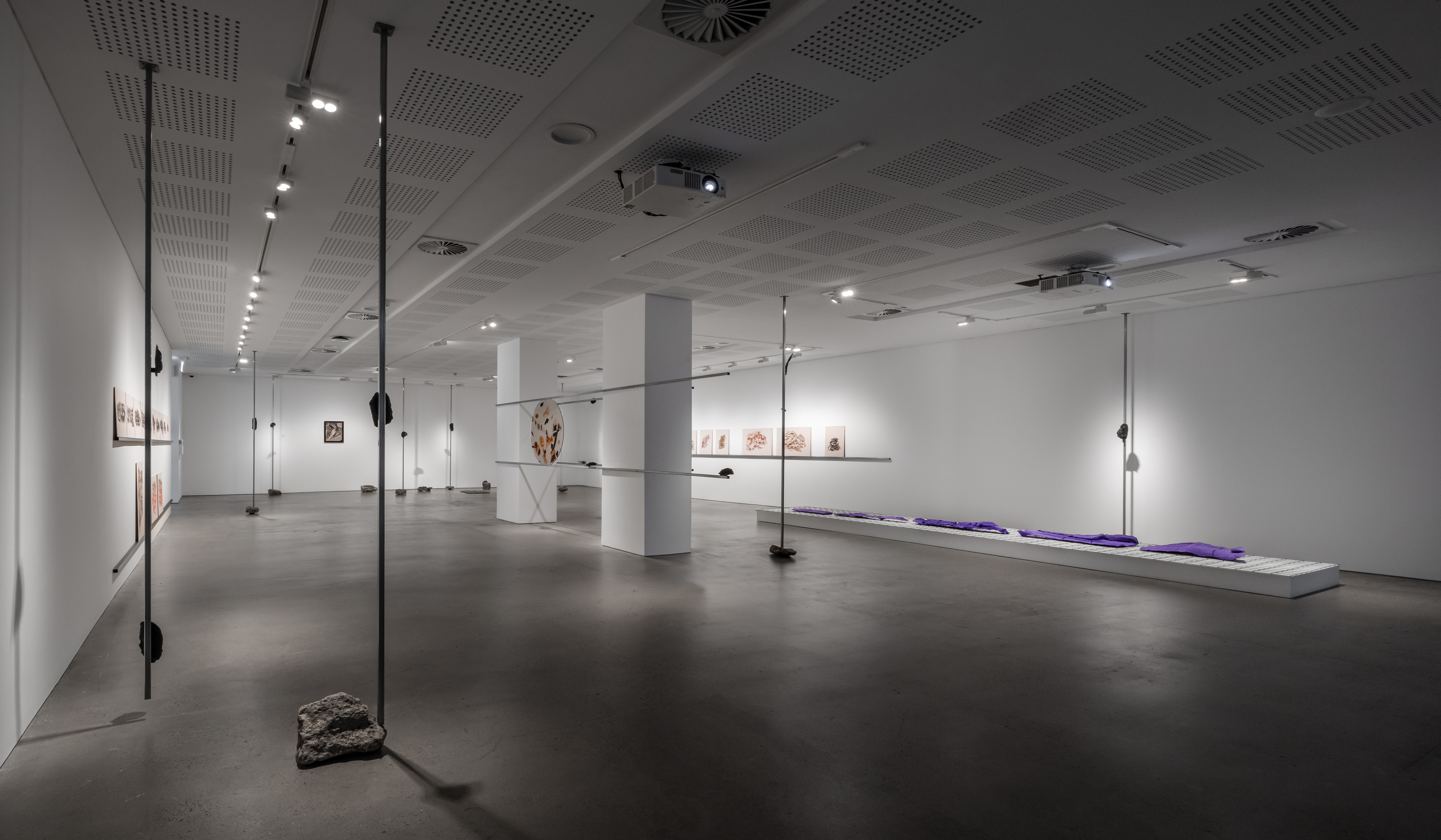
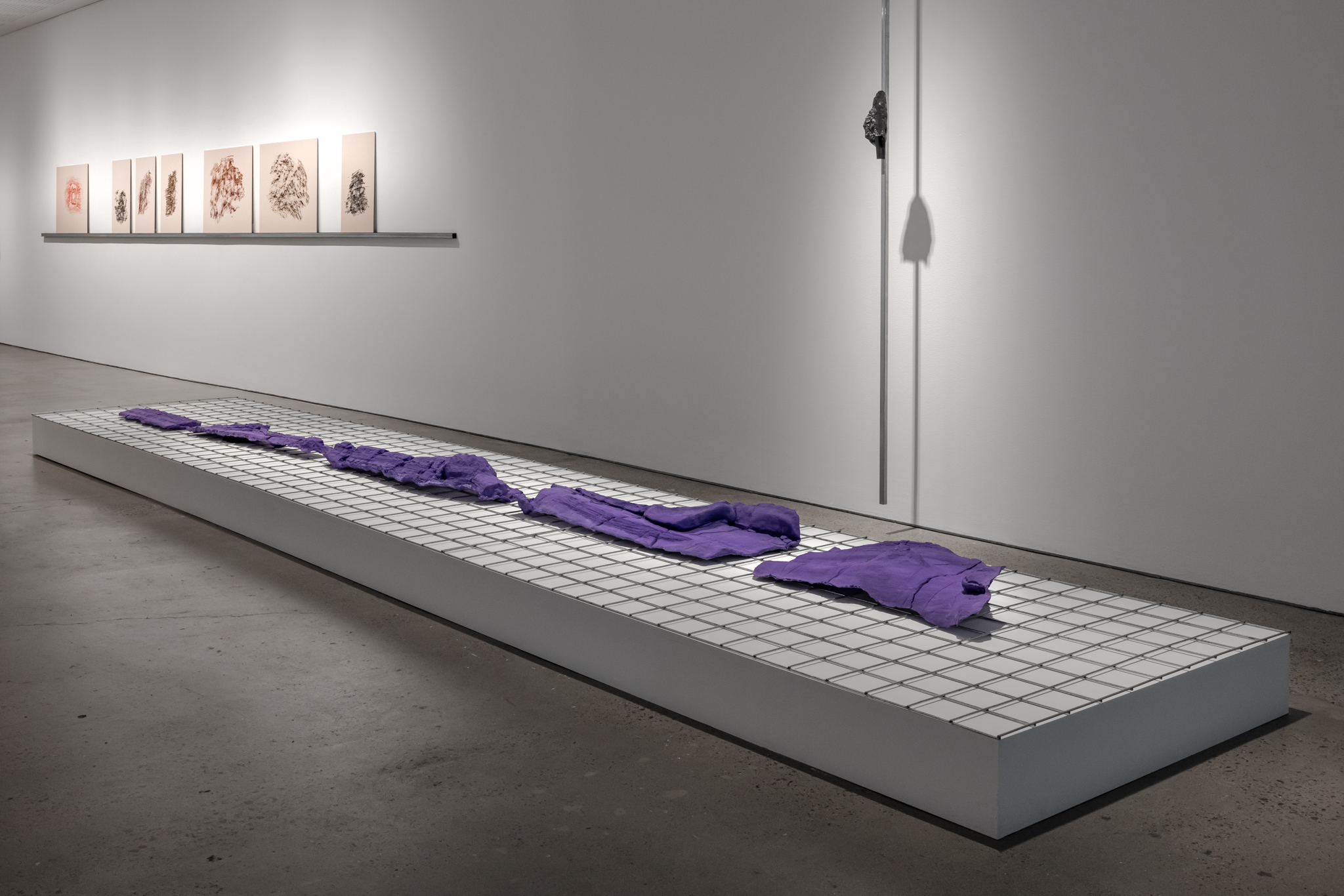
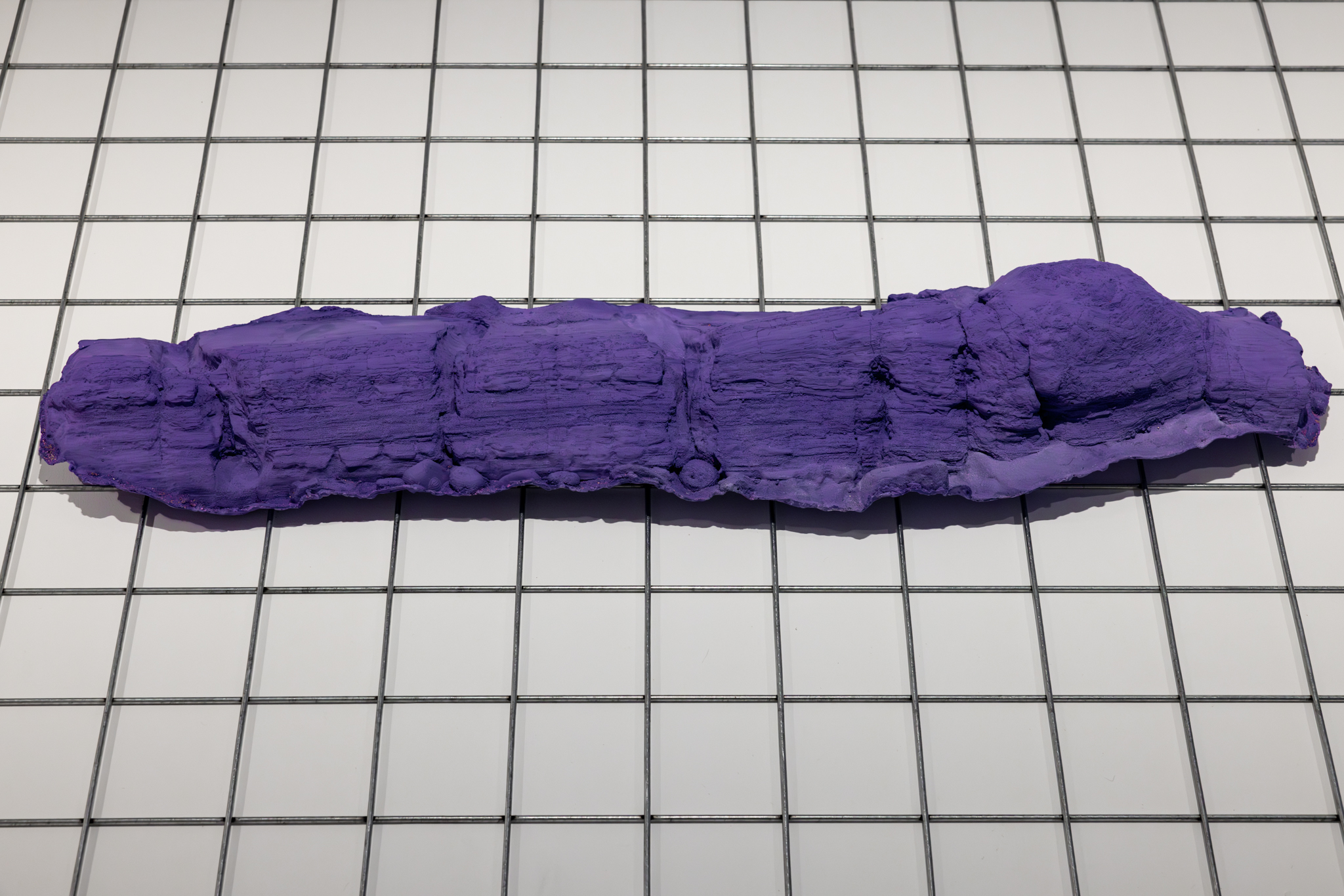
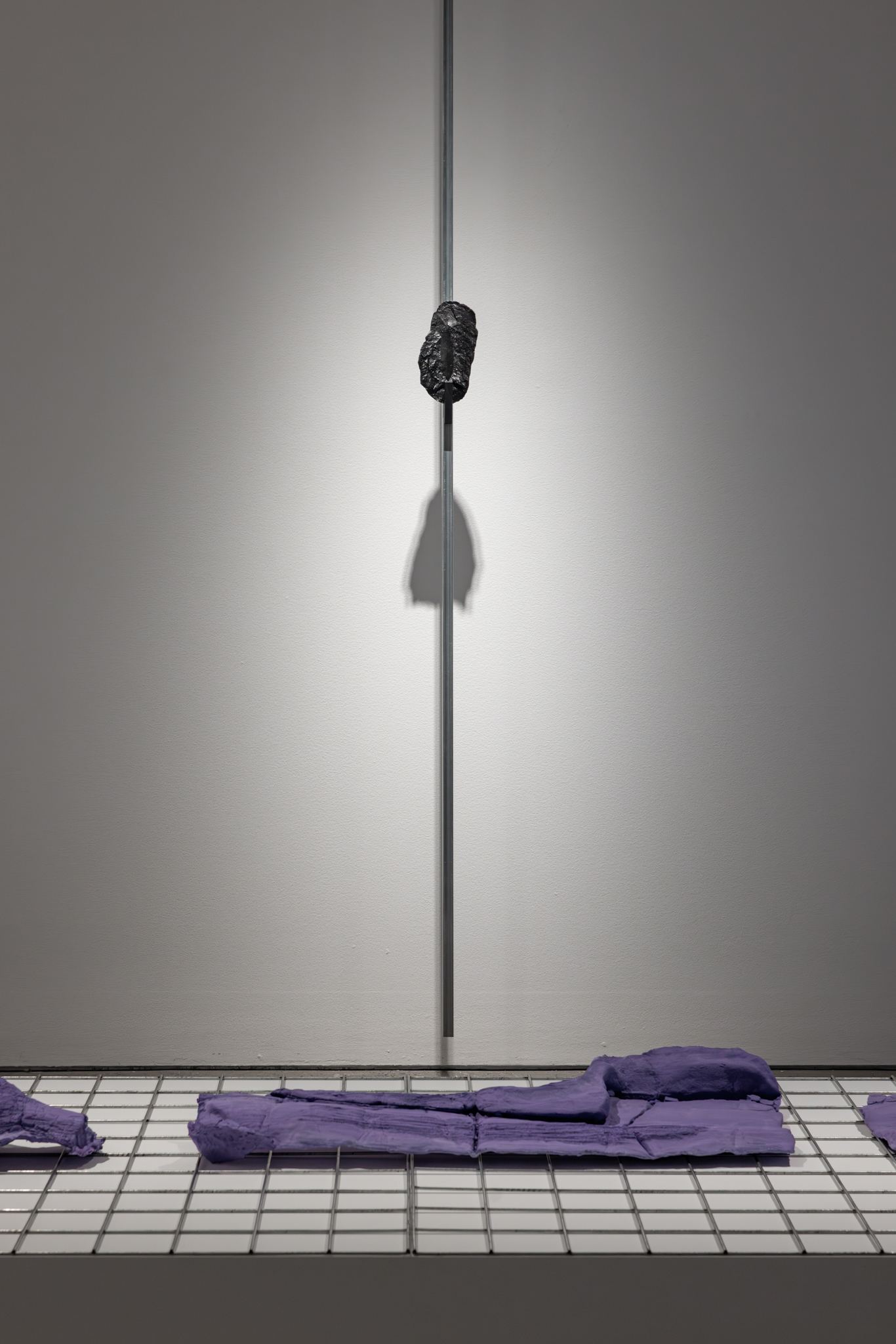
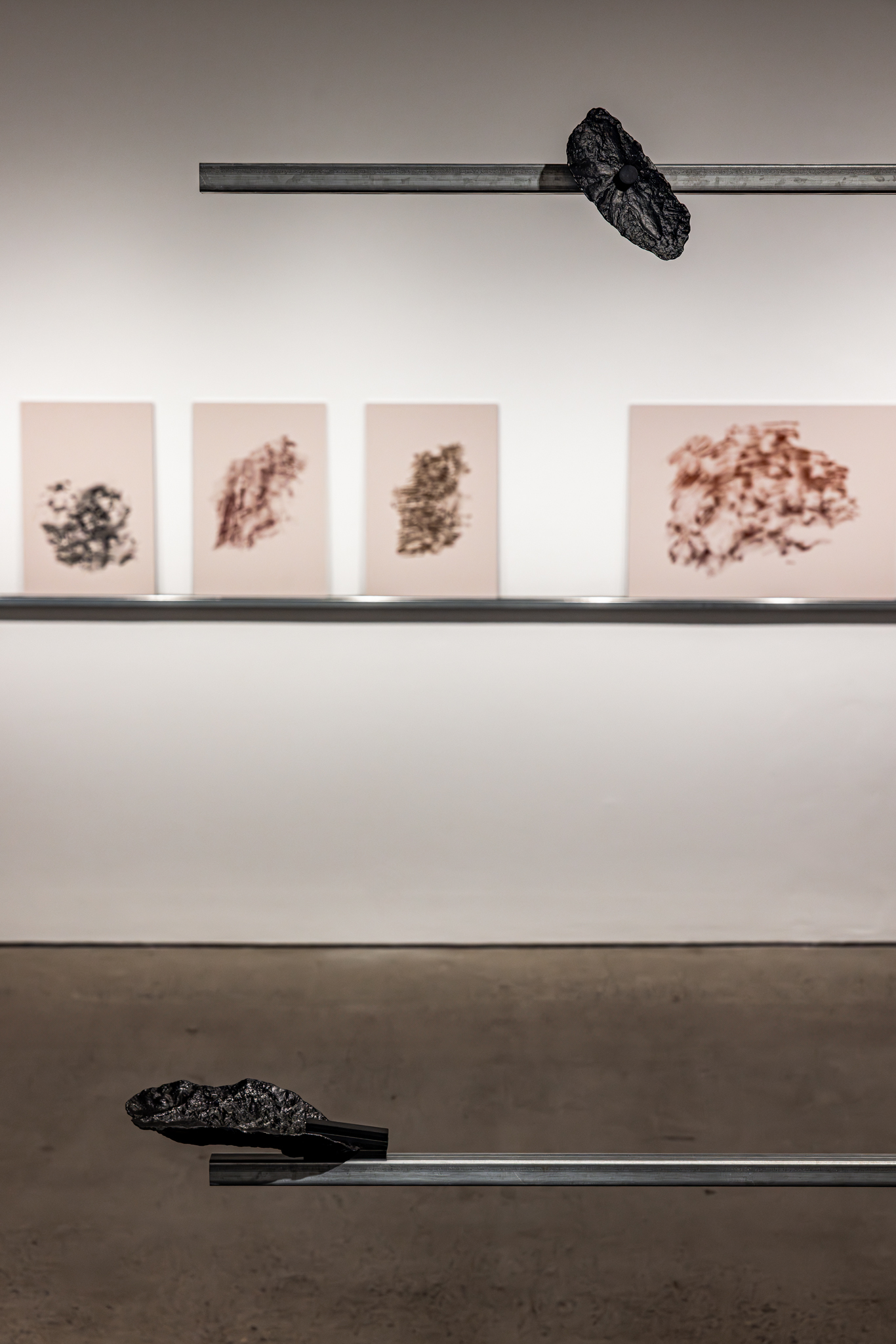
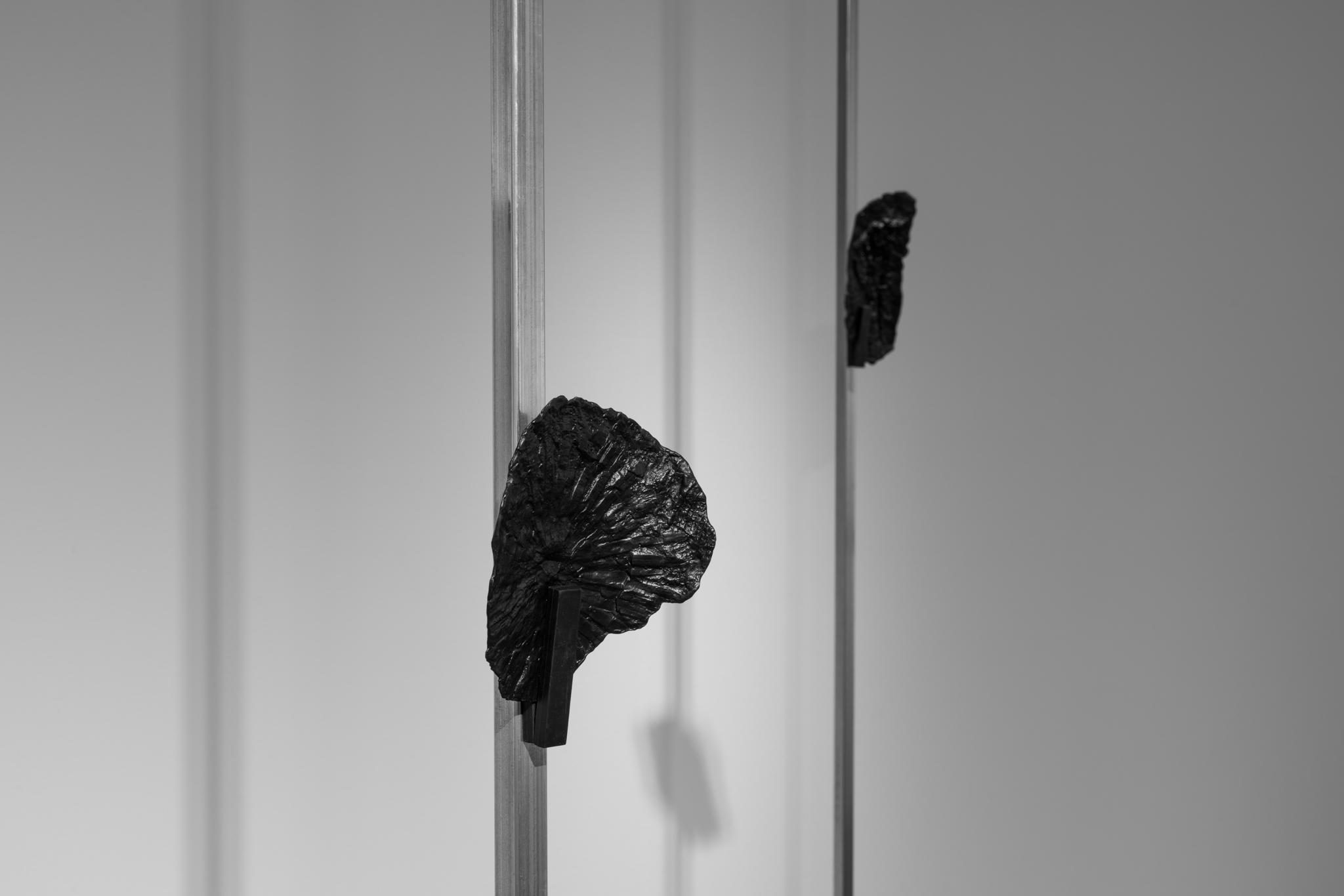
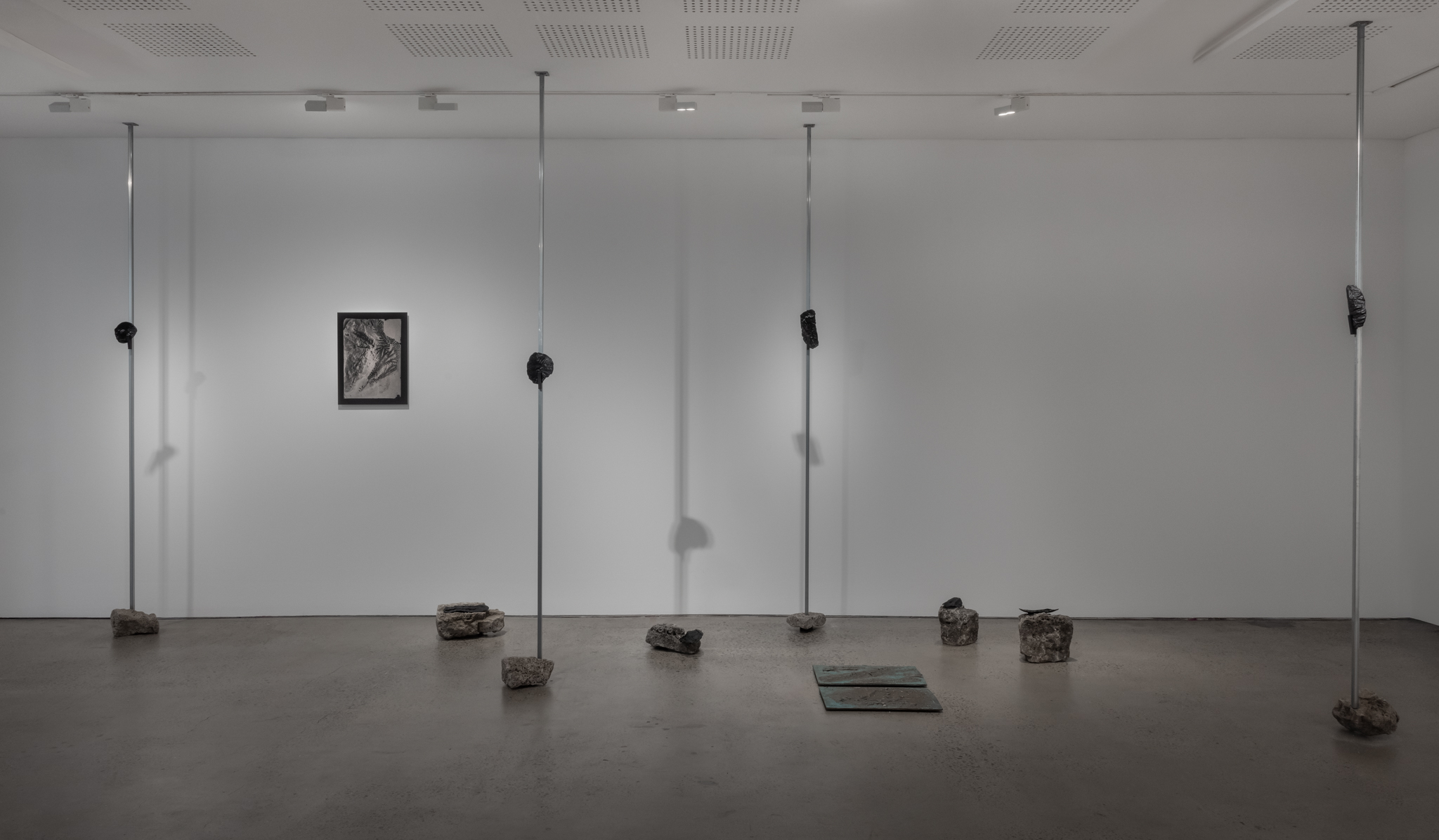
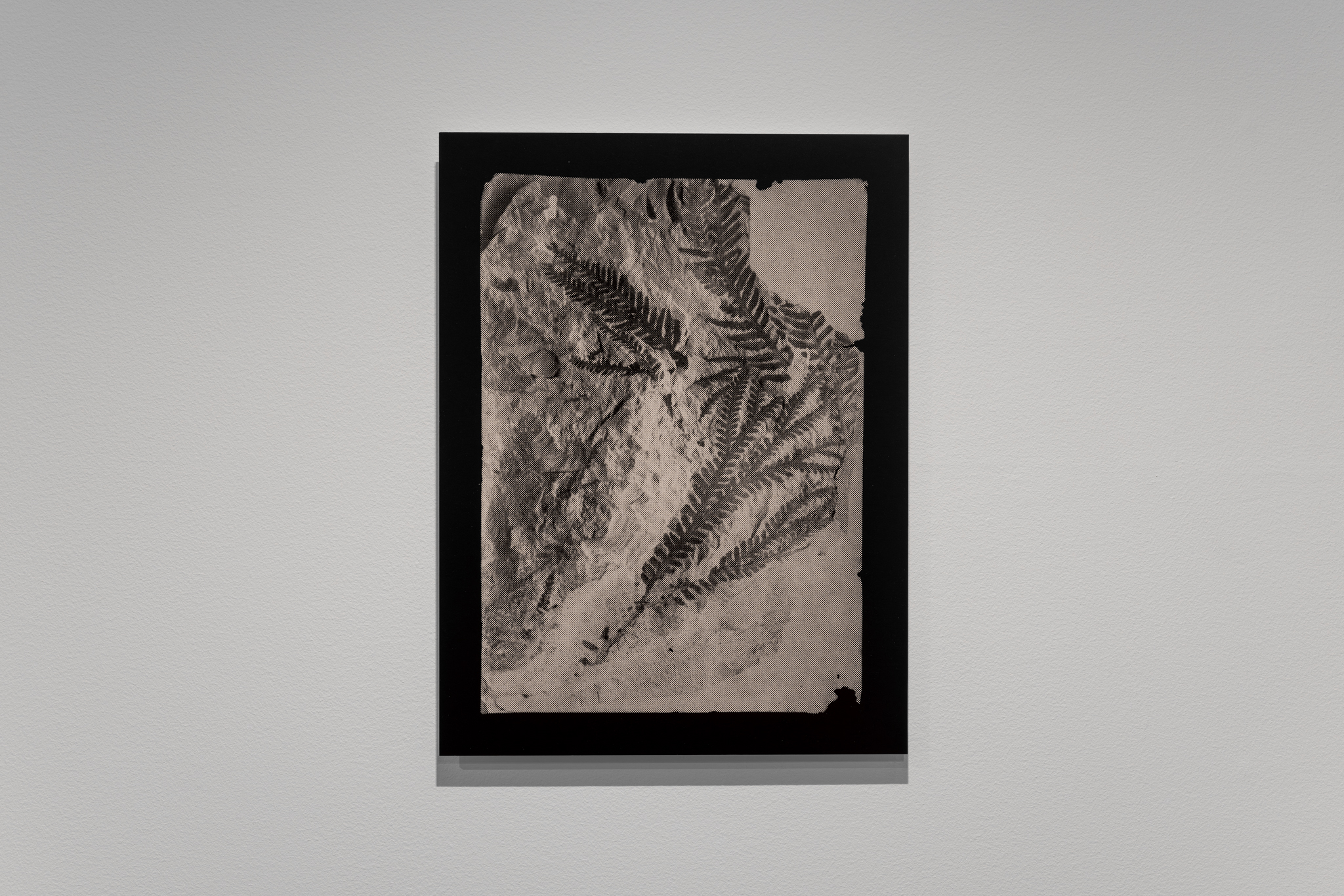
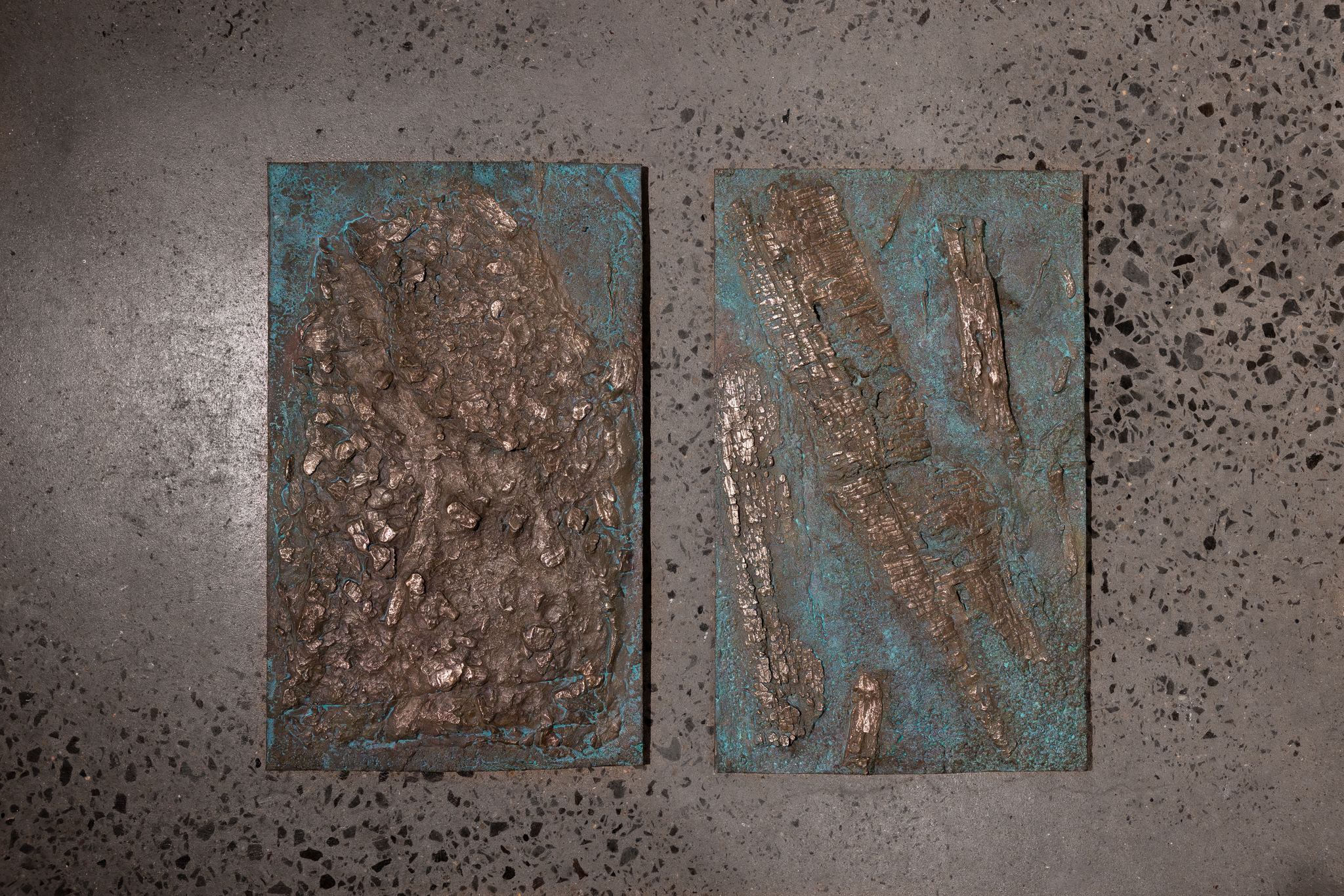
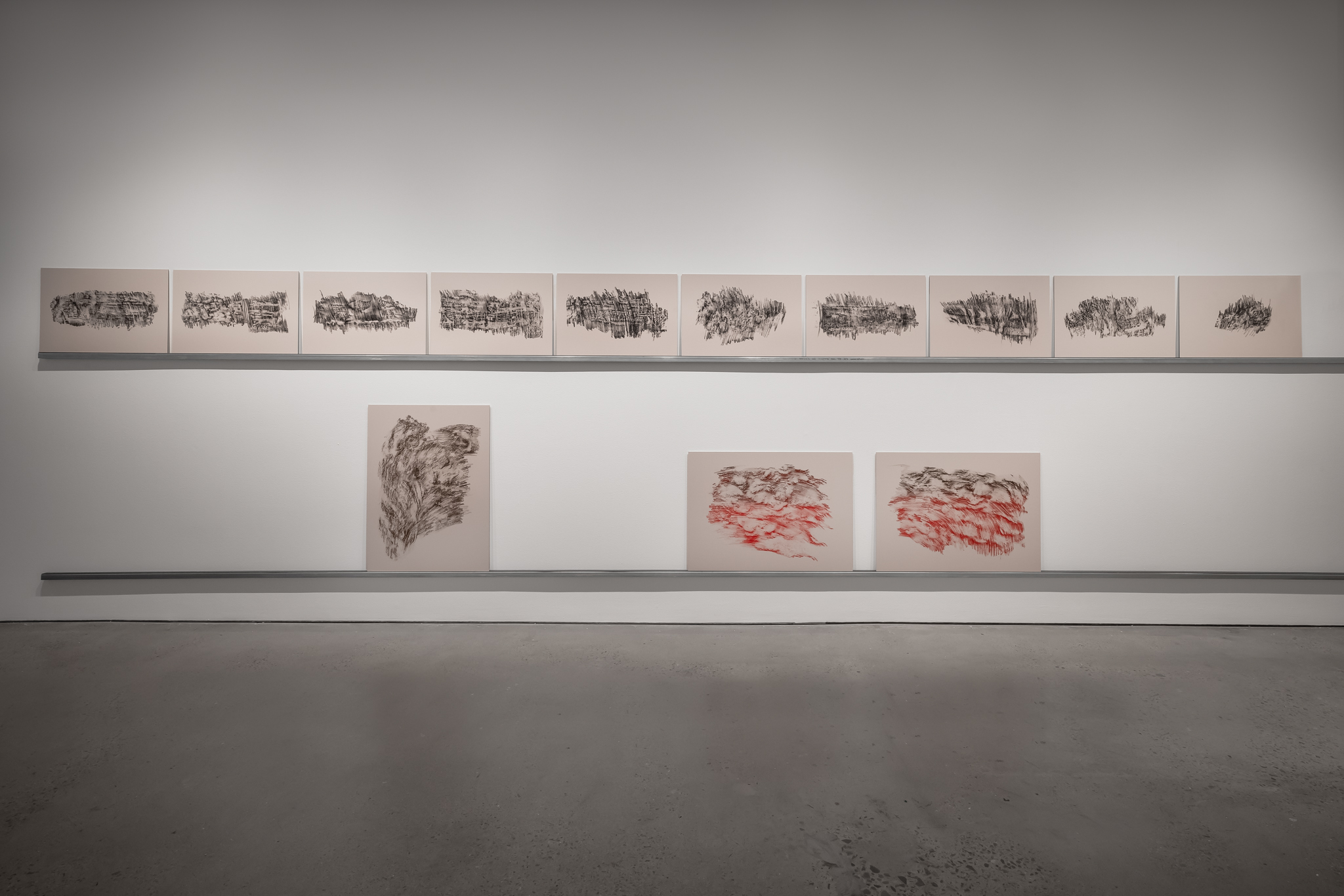
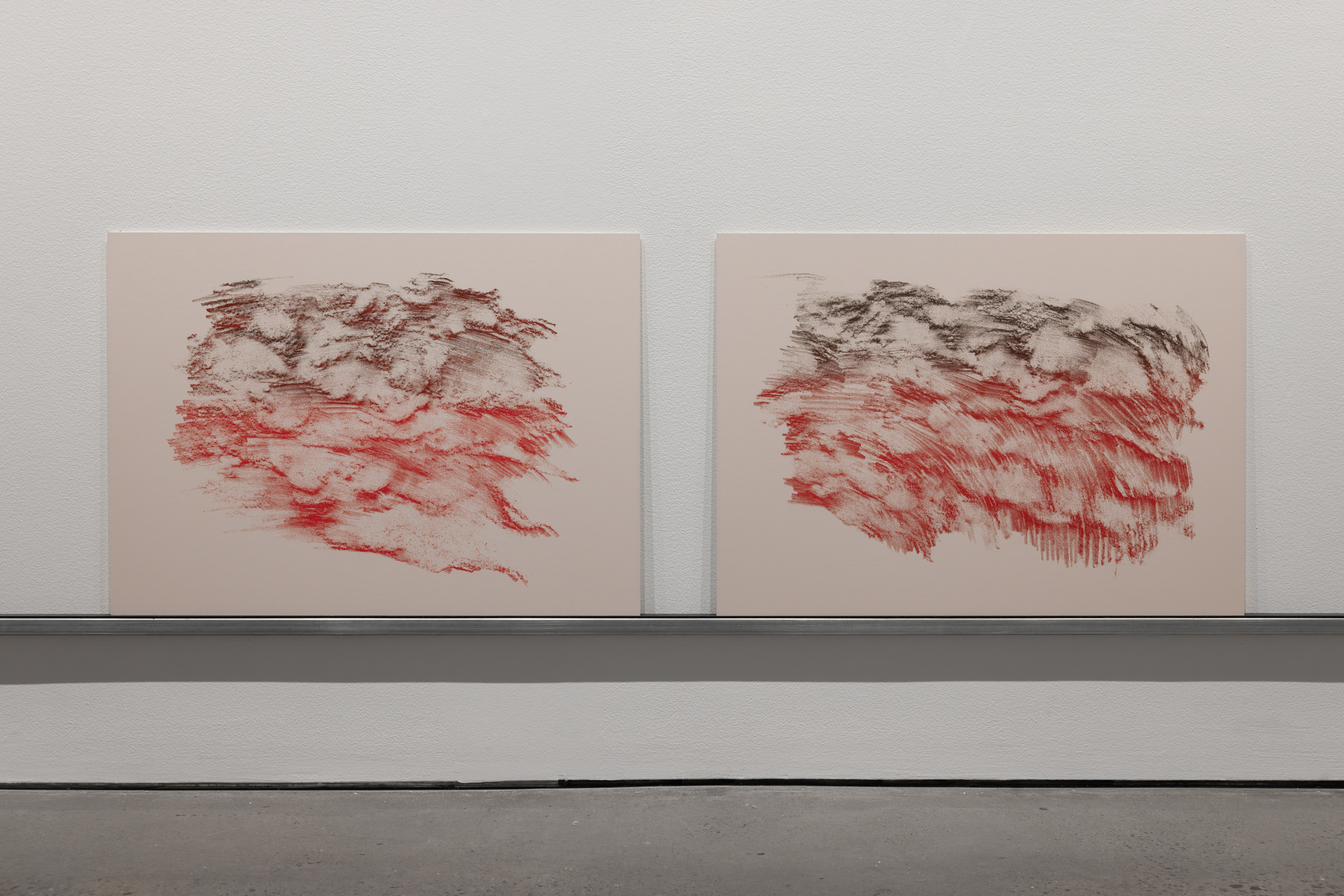
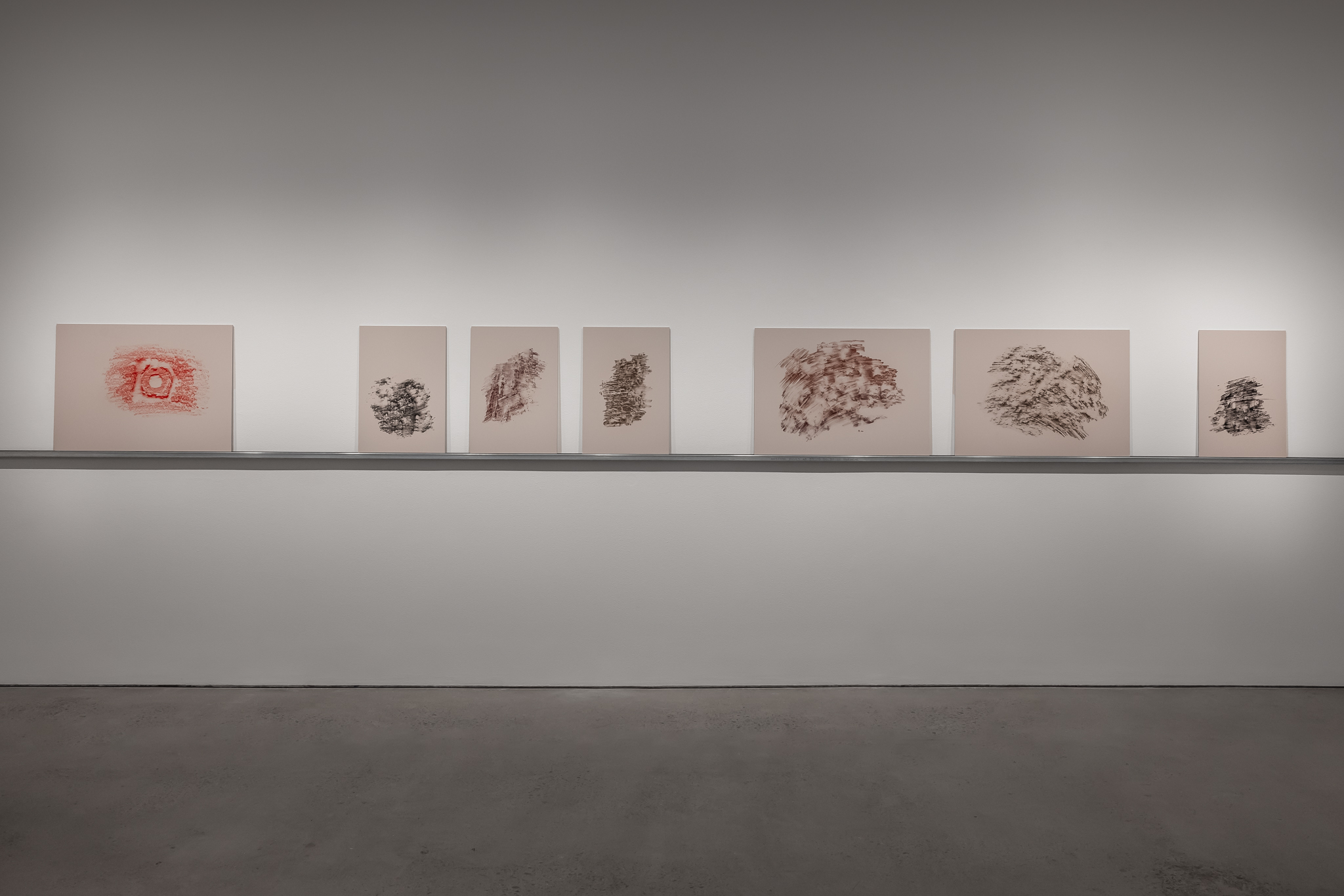
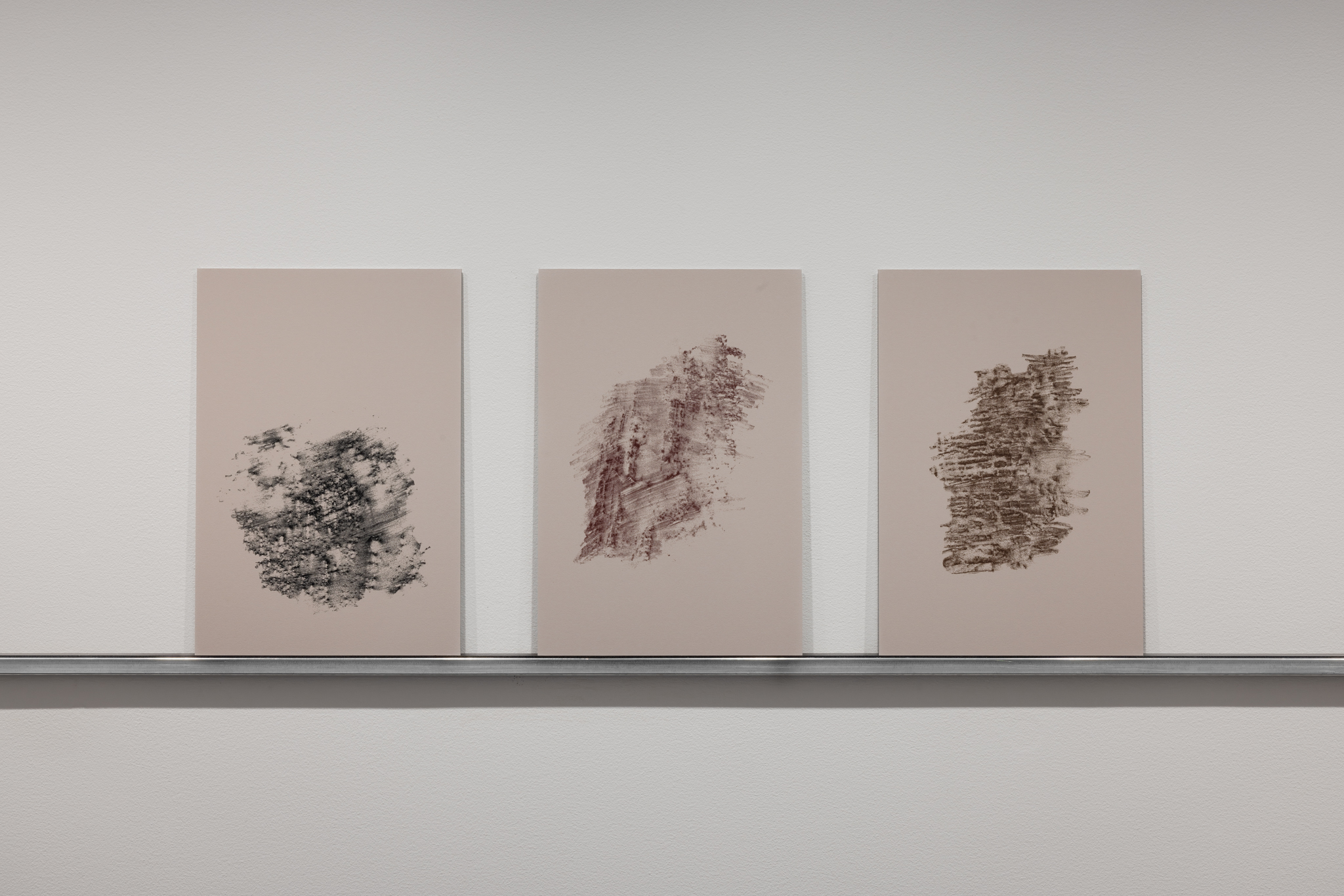
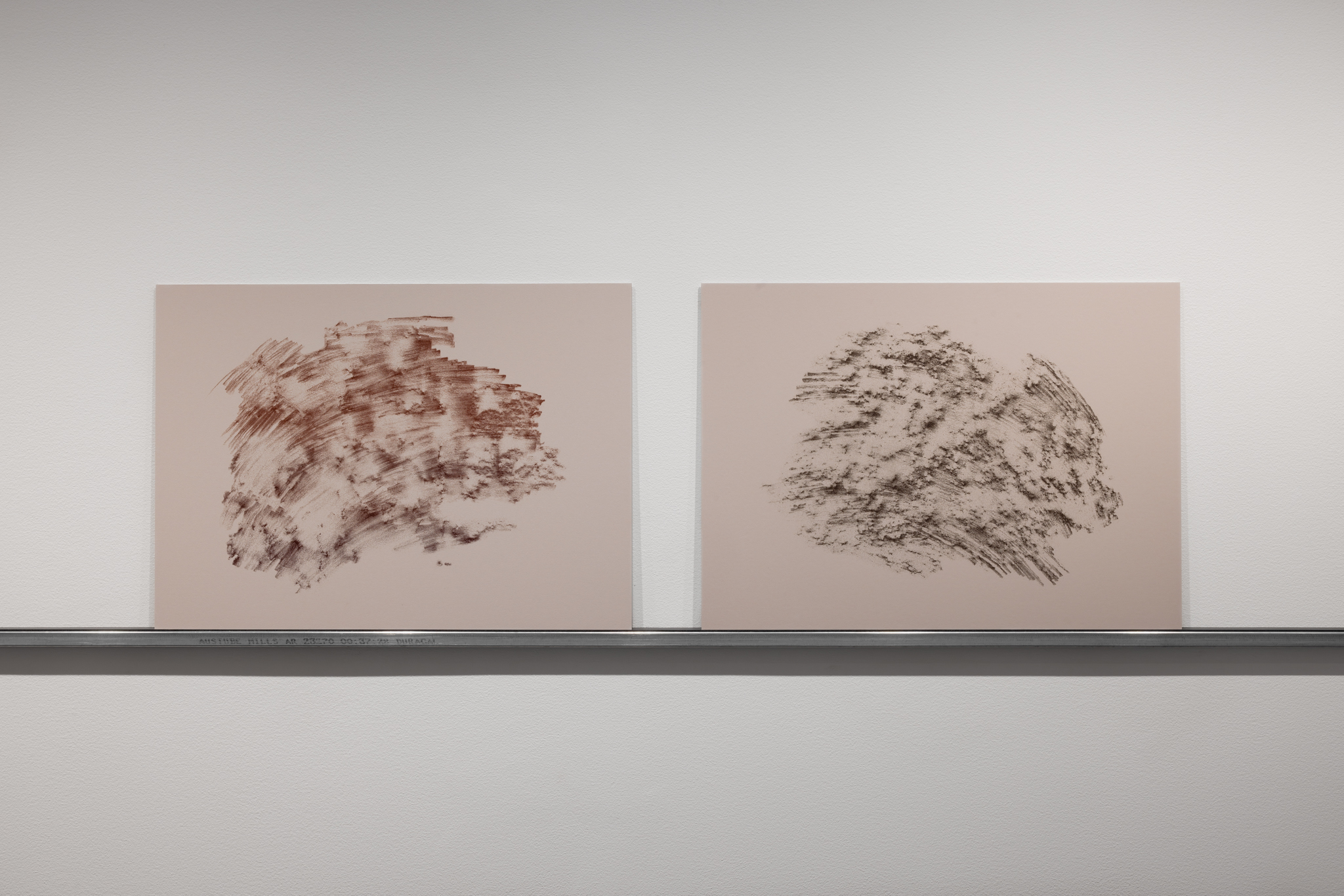
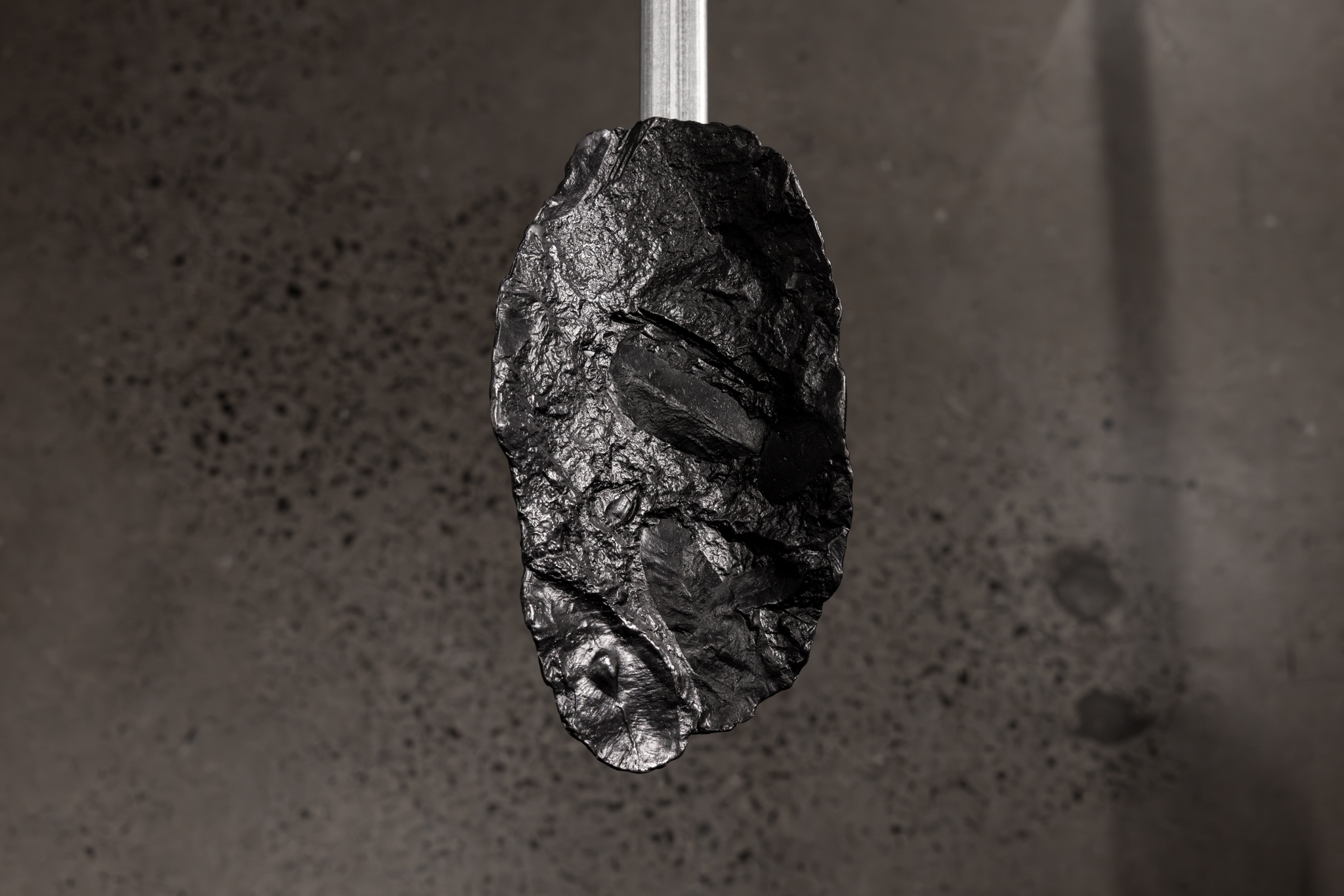
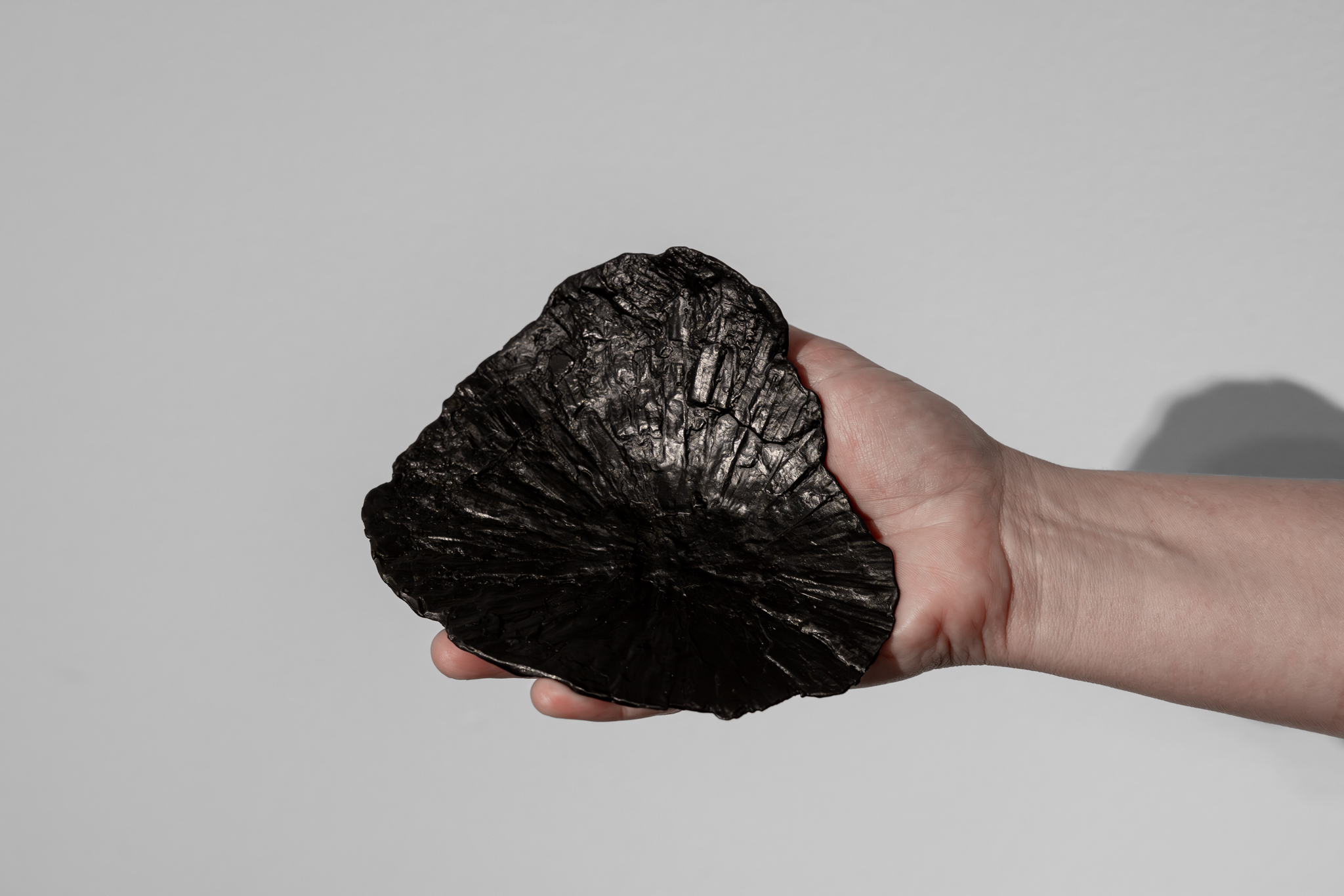
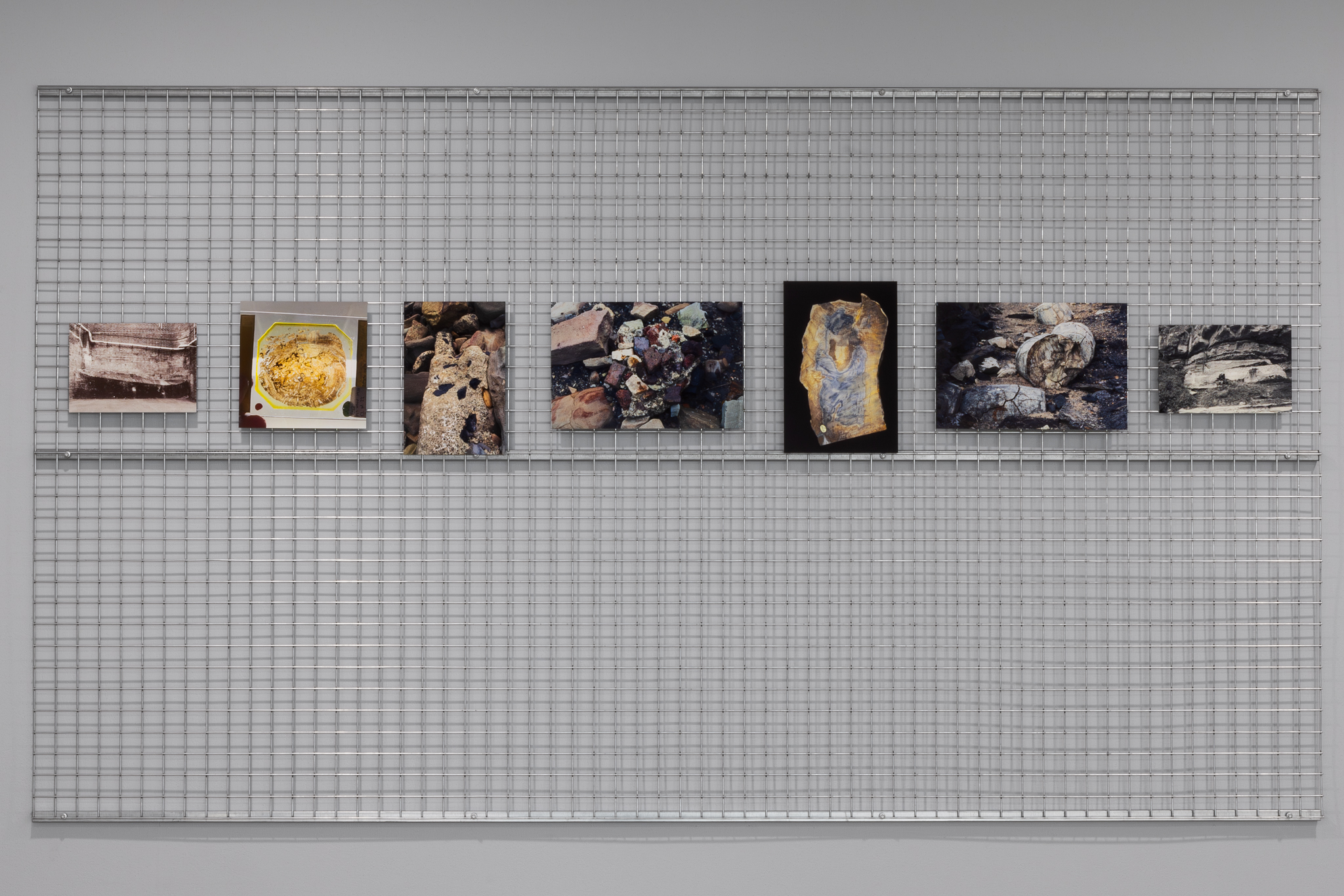
Connecting through place: Bianca Hester in conversation with Bronwyn Bailey-Charteris and Peter Hewitt
Saturday 28th September
2.00pm - 3.00 pm
Nick Waterlow Gallery, UNSW
Book thorugh eventbrite.
This conversation traces the development of ‘Lithic Bodies’, an expanded sculptural response to the vast geologies and deep time stories registered in the Illawarra escarpment on Dharawal Country. Bianca, Bronwyn, and Peter will offer insights into the situated fieldwork underpinning the project, including engagement with specialists spanning fields of social geography, geology, paleobotany, horticulture, and Indigenous knowledge. Together they consider the diverse ways of knowing and relating to place. They will reflect on their own experiences of spending time together walking, listening, and sharing ideas to more deeply engage with this complex landscape.
A new iteration of the reading-walking performance Dust of these domains will be staged at UNSW Galleries during the exhibition.
Friday 8th November
11.00am - 12.00pm
Nick Waterlow Gallery, UNSW
Performers include Bianca Hester & Astrid Lorange.
Register through eventbrite
Friday 15th November
11.00am - 12.00pm
Nick Waterlow Gallery, UNSW
Performers include Bianca Hester & Astrid Lorange.
Register through eventbrite
Interdisciplinary Walking Events
Lithic Bodies: Deep time coastline is a series of walks and a discussion panel staged at the Clifton School of Arts in relation to the exhibition at UNSW Galleries. The walks and panel are a collaboration around the stratigraphic offerings and multiple ecologies, temporalities and narratives surrounding the Illawarra escarpment and coastline on Dharawal land. It aims to address the multiple ways that this complex landscape can be better understood and cared for in the context of a rapidly changing climate. Curated and produced by Bianca Hester and Bronwyn Bailey-Charteris in collaboration with Matt Poll
Sunday 13th October: 10.30am
SHARK!
Led by Leah Gibbs
Meet at the Surf Life Saving Club at Coledale Beach reserve, see map
Leah Gibbs is an Associate Professor in Human Geography at the University of Wollongong. Her research and teaching explores relationships between people and nature, particularly in the context of environmental damage and injustices. She has written on oceans and other watery places, and the processes that threaten and sustain them.
Leah will lead a walk that explores the underwater world from the shore. We’ll look out to sea to consider how we negotiate our relationships with the animals that spark both awe and fear: sharks. The state of NSW holds a multi-pronged program to protect people from perceived threat posed by sharks. The strategy focuses on fishing gear—gillnets and anchored hooks, known as drumlines—designed to catch and ‘remove’ animals, by killing or relocating. Such methods pit humans and sharks in conflict with one another. And yet, we know that people and sharks meet regularly without harm to either. Together, we’ll consider other ways of relating with the ocean, and imagine other possible futures.
Book this walking event through Trybooking
Saturday 19th October: 1.00pm
Sacred land
Led by Uncle Peter Button
Meet at Sandon Point car park
Corner of Point Street and Blackall Street, Bulli see map
Uncle Peter Button is a respected Aboriginal elder, environmental and cultural advocate. He was awarded Wollongong Aboriginal Male Elder of the Year 2022, is a co-founding member and caretaker of the embassy at Sandon Point and the current chair of the Illawarra Local Aboriginal Land Council.
Sandon Point in Bulli is a sacred site that holds enormous significance in the Illawarra, being the place engaged by Dharawal people for gathering and ceremony for thousands of years, and where bones of a Karadji (cleverman) emerged after the floods of 1998. Uncle Peter was a key participant in the protest against planned development of the site which began in the year 2000 with a sacred fire that was kept burning for 4 years on location.
Book this walking event through Trybooking
Sunday 20th October: 10.00am
Remnant forest ecosystems of the Illawarra Escarpment
Led by Leon Fuller and Emma Rooksby
For those without car transport – meet at 9.30am on the western side of Thirroul Railway Station for car pooling options. Google map coordinates:
-34.318095875602644, 150.91865277493426
Or at the start of the track on Bulli Pass. The starting point is on the flat section of Bulli Pass approximately half way up the pass. Google map coordinates:
-34.319824162451155, 150.89628603299263
Led by Leon Fuller (author of Wollongong’s Native Trees) and Emma Rooksby (Chair of Landcare Illawarra and winner of the City of Wollongong Environmental Achievement Award 2023), co-instigators of the Growing Illawarra Natives project.
Leon and Emma will lead a walk through a pocket of rainforest situated on the Illawarra Escarpment, southwards from Bulli Pass. This track, on the upper bench of the escarpment, winds through eucalypt forest and Illawarra Subtropical Rainforest. The forest communities are representative of those in the northern part of the Illawarra District along the escarpment. The tall wet sclerophyll forest supports eucalypts such as Blackbutt, Blue Gum and White Topped Box, with an understorey of many plants. The rainforest contains many species characteristic of this section of the escarpment, such as; Red Cedars, Giant Stinging Trees, Sandpaper figs, Cabbage Palms and many other species including a plethora of ferns. The highly diverse understorey points to the future of the rainforest, when today’s seedlings mature into tomorrow’s canopy trees. The walk will be mainly on-track with some off-track walking, guided by local topography, vegetation and the paths visible to us as we make our way through the forest.
Book this walking event through Trybooking
Please note: Sturdy walking boots, long pants, long sleeved shirt, hat, water bottle and insect repellent are strongly advised. The terrain can be steep and slippery in some places so please ensure you are at a moderate level of fitness.
Sunday 27th October
10.30am – 1.00pm
Clifton School of Arts
338 Lawrence Hargrave Drive, Clifton
Deeptime Coastline: Public Discussion Panel & Closing Event
Book this discussion event through Trybooking
Deeptime Coastline is a discussion panel staged at the Clifton School of Arts in relation to the new body of expanded sculptural work. The discussion panel is a collaboration around the stratigraphic offerings and multiple ecologies, temporalities and narratives surrounding the Illawarra escarpment and coastline on Dharawal land. It aims to address the multiple ways that this complex landscape can be better understood and cared for in the context of a rapidly changing climate. Chaired by Matt Poll with speakers and special guests Uncle Peter Button, Tyson Frigo, Peter Hewitt, Tara Djokic, Brian Jones and Nicole Smede. Curated and produced by Bianca Hester and Bronwyn Bailey-Charteris in collaboration with Matt Poll.
10.30am
Welcome to Country and smoking ceremony, led by Uncle Peter Button
11.30am-1.00pm
DISCUSSION PANEL
Matt Poll (Panel chair) - Manager of Indigenous Programs, Australian National Maritime Museum
Peter Hewitt - Jerrinja Yuin educator and artist, Senior Lecturer in Aboriginal Education at UoW
Dr Tara Djokic - Scientific Officer, Palaeontology, Geosciences and Archaeology, Australian Museum
Nicole Smede - Worimi European multi-disciplinary artist, Artistic Director – First Nations – Red Room Poetry
Tyson Antonio Frigo - Wiradjuri Yuin man, Curator Indigenous Programs, National Maritime Museum
Dr Brian Jones - Geologist, School of Earth, Atmospheric and Life Sciences, University of Wollongong
1.00-2.00pm
LUNCH
Catered by Aunty Donna Dunning for participants and audience
2.00pm-4.00pm
PROJECT CLOSING EVENT
The closing event is open to all - please attend without needing to book!
Biographies of discussion panel
Uncle Peter Button is a respected Aboriginal elder, environmental and cultural advocate. He was awarded Wollongong Aboriginal Male Elder of the Year 2022, is a co-founding member and caretaker of the embassy at Sandon Point and the current chair of the Illawarra Local Aboriginal Land Council.
Tara Djokic is a geologist with a passion for science education and communication. Gaining a love of the natural world through the lens of geology, led to a passion for sharing its knowledge. Not something Tara expected to do across such an extreme range of audiences. She has presented for TED, appeared in an IMAX documentary, attempted Science Comedy for the Steam Room, and most recently met Jemima and Little Ted when she appeared on an episode of Play School’s Science Time, which aired in August this year. Tara is currently a Scientific Officer in the Palaeontology Collection, at the Australian Museum Research Institute, Australian Museum where she investigates the fossilisation processes (taphonomy) of an 11-16 million-year-old rainforest lake deposit called McGraths Flat, situated in the central tablelands of New South Wales on Wiradjuri Country, Australia. Tara has a fervour for seeking out the interconnections between life and geological history, lending a fresh perspective on our place in time and space.
Tyson Antonio Frigo is a Wiradjuri, Yuin man who works as the Curator of Indigenous Programs at the Australian Maritime Museum. He has a passion for creating space and fostering new ways of ‘acknowledging’ Indigenous materials whether it be artworks, objects or something beyond definition. He received tutelage from many great elders and ‘Blakacademics’ on the south coast during his formative years and considers his role as Murrigal or ‘strange traveller’- connecting with communities, listening, learning and doing what he can to connect them to the resources/institutions.
Peter Hewitt is a Jerrinja Yuin man with deep family, community, kinship and cultural connections, Peter weaves his expertise in education and creative arts in his role as a Senior Lecturer in Aboriginal Education at the University of Wollongong to help care for Country. He is currently undertaking a PhD on Country-centred approaches to curriculum in Initial Teacher Education and is the co-lead of the Country, Contexts, and Cultures focus area at the Early Start Institute, illustrating his commitment to respectful, Country-centred research. Peter’s contemporary painting practice spans over two decades, reflected through solo exhibitions and prestigious art prize recognitions. His paintings are housed in public collections at institutions including Wollongong City Gallery, Shoalhaven Regional Gallery, and have been in numerous art prizes including Parliament of NSW Aboriginal Art Prize and National Aboriginal and Torres Strait Islander Art Awards.
Brian Jones is a geologist whose research focuses on sedimentology predominantly in fluvial, lacustrine, coastal and shallow marine deposits ranging in age from Precambrian to Recent.For many years he has carried out research and led numerous field trips on coastal rock sequences from Eden to Sydney. One of his specialisations has been on the local Illawarra Coal Measures, Narrabeen Group and Hawkesbury Sandstone. Another is the effects of climate change on the coastal landscape over the past 125,000 years. He is a University Fellow in the School of Earth, Atmospheric and Life Sciences at the University of Wollongong, and a member of the ARC Centre of Excellence for Australian Biodiversity and Heritage (CABAH).
Matt Poll (chair) is the Manager Indigenous Programs at the National Maritime Museum, Sydney, where he works with First Nations communities to develop new ways of understanding marine and freshwater environments, and de-centre some of the colonial naval focus of the collection. He has worked in museums and art galleries for nearly 20 years. For the past seven years, he has been the Assistant Curator of the Macleay Museum Indigenous Heritage Collections as well as the University of Sydney Repatriation Project Officer. Matt previously worked as the artistic director of Boomalli Aboriginal artists cooperative as well as other positions at the Museum of Contemporary Art and Wollongong City Gallery. His current master’s by research project seeks to further develop methods of understanding the ways contemporary Aboriginal and Torres Strait Islander artists have used museum collections, historic records and archival materials in the reconstruction of cultural identities. It’s exploring how visual artists, in particular, have developed auto-ethnographic methods of engaging with historical information outside of academic frameworks.
Nicole Smede is a multidisciplinary artist of Worimi and European descent, living and creating on Dharawal Country. A classically trained Mezzo Soprano, she ran away from classical music early on to pursue wider artistic interests. Her voice can be heard on award winning films and soundtracks, and her poetry can be found in exhibitions, visual and sound pieces, anthologies and journals including Australian Poetry Journal, Mascara Literary Review, Never Heard of Them (2019, Baby Teeth Journal), Guwayu: for all times (2020, Magabala Books), What we Carry (2021, Recent Work Press), 20x20x12 Sensing Place (2021, Manta Publishing), Mantle (2022, SCWC), The Anabranch (2022, HWC), and Shoot the Breeze (2022, Girls on Key). Nicole has extensive experience as a cultural producer across multiple artforms including film, music, performance and visual art and is a passionate advocate for arts education and the revitalisation of First Languages. Nicole is a judge for the Reconciliation NSW Schools Reconciliation Challenge (since 2019) and she has worked with and facilitated workshops for The NSW Department of Education, The Song Company, Red Room, Bundanon Trust, Wollongong City Council, South Coast Writers Centre, Reiby Juvenile Justice Centre and schools across the NSW East Coast. Working closely with Elders and community, Nicole is currently the vocal coach for South Coast Yuin women’s choir Mudjingaal Yangumba, who weave language into original songs and storytelling.
I acknowledge collaboration, guidance and contributions from the following people over the duration of this project:
Project and public programs curator: Dr Bronwyn Bailey-Charteris (independent curator, writer, lecturer UNSW Sydney)
Cultural consultation and mentoring: Peter Hewitt (Jerrinja Yuin educator and artist, Senior Lecturer in Aboriginal Education, University of Wollongong); Cultural consultation: Uncle Peter Button (Wollongong Aboriginal Male Elder of the Year 2022, co-founding member and caretaker of the embassy at Sandon Point, current chair of the Illawarra Local Aboriginal Land Council), Nicole Monks (Yamaji Wajarri/Dutch/English independent artist and designer, Professor of Practice, UNSW Art & Design)
Public programs collaborators: Matt Poll (Manager of Indigenous Programs, Australian National Maritime Museum), Tyson Antonio Frigo (Wiradjuri Yuin Curator Indigenous Programs, Australian National Maritime Museum), Nicole Smede (Worimi independent multidisciplinary artist, Red Room Poetry), Leon Fuller (author of Wollongong’s native trees), Emma Rooksby (Chair, Illawarra Land Care), Dr Leah Gibbs (School of Geography and Sustainable Communities, University of Wollongong)
Exhibition design: Ying-Lan Dann (Sertori Lau Architecture); Video production and editing: Sammy Hawker (independent artist); Sound design: Aaron Hull (independent sound artist, University of Wollongong); Screen printing: Trent Walter (Negative Press, Melbourne); Graphic design: Paul Mylecharane (Public Office)
Technical and fieldwork support: Ian Hibble (independent producer); Research assistance and fieldwork support: Izak Schoon (ecologist); Fieldwork support: Dr Brogan Bunt (School of the Arts, English, and Media, University of Wollongong), Dr Lizzie Muller (School of Art & Design, UNSW); Kieran Jones (Clifton School of Arts); Lana Nguyen (independent producer, Co-Instigator of A Climate for Art)
Geologic consultation: Dr Solomon Buckman (School of Earth, Atmospheric, and Life Sciences, University of Wollongong), Dr Brian Jones (University Fellow, School of Earth, Atmospheric, and Life Sciences, University of Wollongong), Dr Megan Williams (School of Earth, Atmospheric, and Life Sciences, University of Wollongong), Dr Tara Djokic (Scientific Officer, Palaeontology, Geosciences and Archaeology, Australian Museum); Geologic consultation and scientific photography: Dr Patrick Smith (Technical Officer, Australian Museum); Access to the palaeobotanical collection, Australian Museum: Dr Matthew McCurry (NSW Senior Research Scientist and Scientific Officer, Curator, Palaeontology, Australian Museum); Research assistance: Dr Graham McLean (Research Associate, Palaeontology, Australian Museum); Access and permission to reproduce light micrographs: Professor Vivi Vajda (Head of Palaeobiology, Swedish Museum of Natural History)
This project has been assisted by the Australian Government through Creative Australia, its principal arts investment and advisory body, and the NSW Government through Create NSW.
The public programs held through the Clifton School of the Arts have been funded by the City of Wollongong.